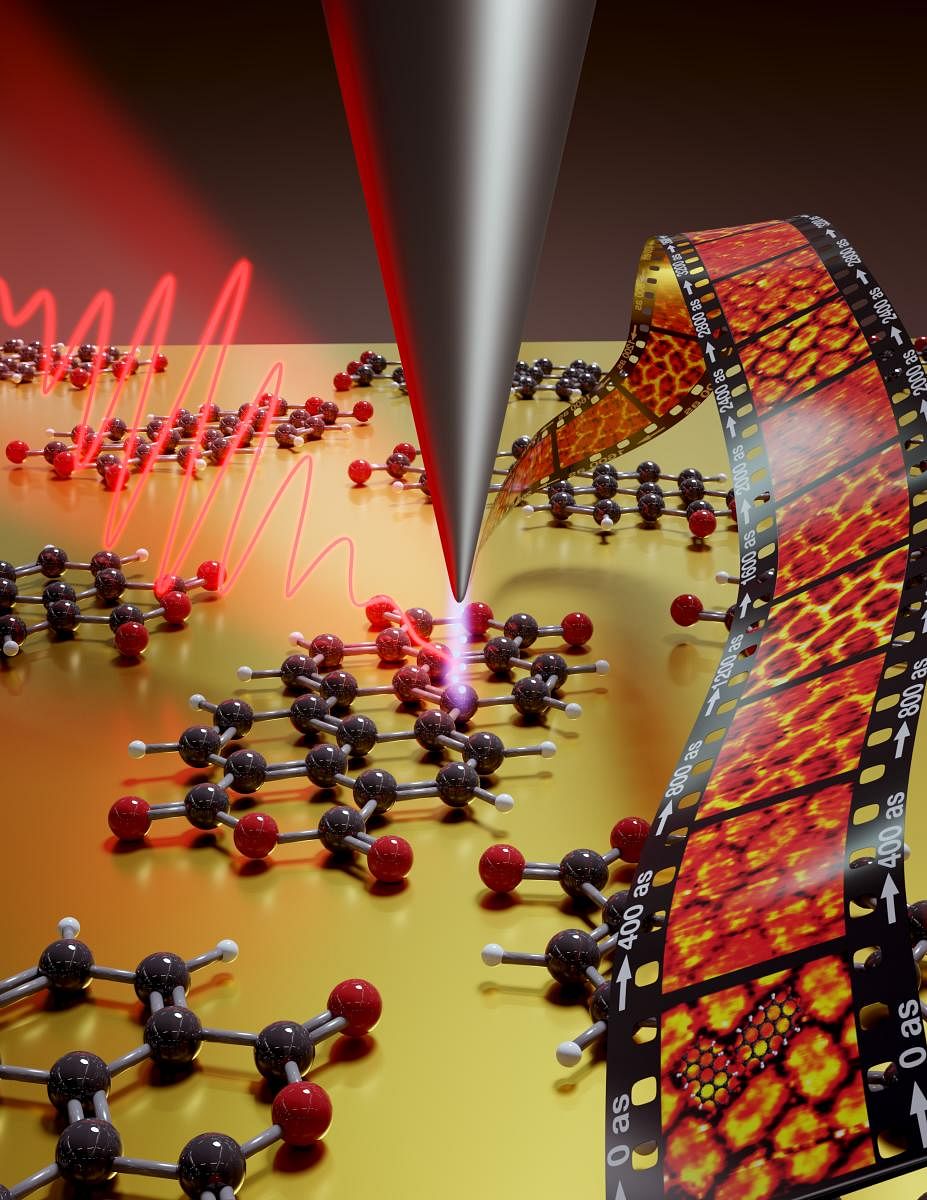
Of all the ambitions of modern science, few are more coveted than the ability to visualise the motion of electronics in atoms and molecules.
By studying the behaviours of electrons in space and time, as precisely as possible, scientists can better understand and even control rapid chemical reactions. This could help usher in major advances in the development of solar cells and electronic components. Beyond this, the mapping of how electrons move in molecules could break down the last barriers in our understanding of fundamental biological processes such as plant photosynthesis.
Current science, however, is limited. Scientists have been forced to rely on imaging techniques that can only provide sharp images in either space or time -- never providing a combined picture.
These images are sometimes difficult to reproduce as they cannot image the fast electrons directly. Scientists have always had to resort to reconstructing the behaviour of electrons, which often provides contradictory information.
Now, scientists at the Max Planck Institute for Solid State Research in Stuttgart have developed a “clever new combination to overcome this limitation,” according to a statement from the institute.
Using established scanning tunneling microscopy and laser spectroscopy together, the team led by Professor Klaus Kern, the director of the institute, found that their atomic quantum microscope can visualise the movement of electrons in individual molecules.
Dr Manish Garg, head of the research group at the institute and corresponding author of the paper, published in Nature Photonics, said that the team faced a substantial challenge in coupling the tunneling microscopy technology with cutting-edge laser technology.
Unique method
“We have been working for several years to combine these two techniques so that each can play to its strengths without introducing its weaknesses,” he said.
For instance, modern microscopy techniques can produce sharp images of individual atoms but are slow and cannot capture the dynamics of electrons in a material. Meanwhile, optical methods using ultrafast laser pulses can detect electron motion in the attosecond range. An attosecond is a billionth of a billionth of a second. Electrons move in the range of a few hundred attoseconds. But the laser method only produces spatially coarse, blurred images.
The new method uses the fundamental aspects of these existing methods. In a scanning tunneling microscope, a razor-thin, atomically thin tip travels just above a conductive surface. Due to the quantum-physical tunneling effect, electrons can flow between the surface and the microscope tip even if there is no direct contact. For example, a molecule on a surface can be shaved off atom by atom, step by step.
Laser pulses are used to modulate the tunneling current by selectively exciting the electrons in the material. “This has to be done extremely quickly, otherwise thermal effects…come into play and make the measurements impossible,” said researcher Dr Alberto Martin-Jimenez.
While necessary ultrafast laser pulses in the attosecond range were unavailable before, the clipped rate of development of laser technology in recent years has given researchers the ability to fire the right pulses at precise intervals.
“Two years ago, Garg and Kern demonstrated the function of such an atomic quantum microscope for the first time. Now they have succeeded in directly observing electron motion in molecules with this unique instrument,” the Institute said.
With the help of the ultrashort pulses, the electrons in the molecule could be excited to jump between the different orbitals. This was noticeable in the tunnel current.
The institute said that the new technique works by shooting two minimally time-delayed pulses in rapid succession at the target molecule. There is to be an exact time interval between the pulses. If this procedure is repeated several times and the time interval between the pulses is varied, an image series is obtained that reproduces the behaviour of the electrons in this molecule with atomic precision. The fast laser pulses thus provide the information about the electron dynamics, while the tunneling microscope precisely scans the molecule.
“This allowed us for the first time to directly image the dynamics of electrons in molecules as they jump from one orbital to another,” Dr Garg said.
This technique gives scientists the unique possibility to directly observe quantum mechanical processes such as the charge transfer process. This plays a crucial role in biophysical reactions as well as reactions in solar cells and transistors.